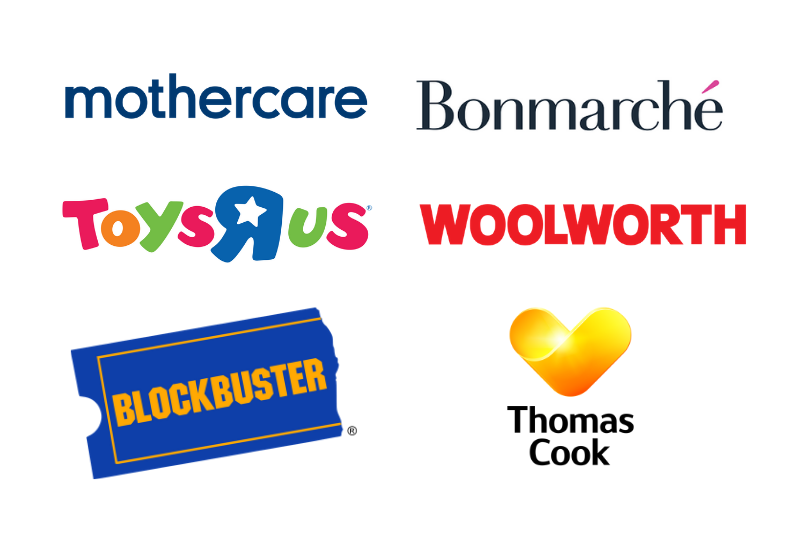Mothercare Has Failed To Keep Up With Modern Marketing...Is YOUR Business Next?!

By now, you may already be aware of the latest high street giant to have folded. Mothercare – for decades, the leading retailer of baby clothes and paraphernalia – confirmed last week that it was ceasing its UK operation and placing its 79 stores into administration. Mothercare joins a depressing list of household retail names who have failed to address the changing needs of modern consumers.
Remember me? Woolworths, Toys “R” Us, Thomas Cook, Dixons, C&A, MFI, Blockbuster, BHS, Focus, and Comet are just a few other well-known victims of high street bankruptcy.
These cases don’t indicate that high street retail is dying - many stores are doing extremely well – but that a lot of retail giants have failed to keep pace with the adaptation and innovation needed to retain their appeal. In other words, it is a failure of marketing, not a lack of market demand.
In light of the collapse of giant, seemingly untouchable businesses, how genuinely resilient is your business? Consumer behavior, and the marketing techniques required to attract new business, are changing at a fast pace. For any business to survive, it needs to be at the top of its game and one step ahead of the competition.
What Lessons Can A Small Business Take From Mothercare Going Into Administration?
1) Assess Your Competitors For Their Strengths And Weaknesses
Most businesses are good at regular self-assessment and SWOT analysis, but businesses never operate in a vacuum. For your marketing to be successful, you need to understand what your competitors are doing. This includes having a deep knowledge of what they are good at and what they could do better. Their weaknesses give you an opportunity, whether these relate to price, customer service, availability or other factors. What would a mystery shopper say about your competitors and what they could improve on? Use this as a mirror to improve your own business and create compelling marketing messages.
2) Listen To Your Customers
The foundation of any good marketing strategy is the creation of buyer personas, as detailed profiles of your ideal customer type. Customer demands change as new technologies and trends emerge, so regularly update your buyer personas with insights from customer conversations, surveys, and market research. This ensures your targeting strategy remains up-to-date. You may find you need to realign your marketing strategy to adapt to new industry data and market trends.
3) Break New Ground
Targeting a consistent audience will help you steadily increase sales and market share within a niche. However, sometimes revolutions happen that completely change your market. Mothercare, for instance, fell victim to independent retailers operating on Amazon and eBay, and frequently importing goods from China. Their original market dissipated within a few short years. You can reduce this risk by targeting new customers and broadening your appeal. This future-proofs your business in a fast-changing economy.
4) Be Responsive
Today’s consumers appreciate attentive, personalised service, to the extent that large and unwieldy corporate giants are now at a disadvantage. Place excellent customer service at the very heart of your marketing strategy. This aids customer retention and also builds your company reputation, making it easier for you to attract new and loyal customers.
Again, Mothercare fell short because they were too slow to respond to customer feedback on price, clothing quality, availability and other factors, with the result that they were no longer viewed as authoritative or responsive. Tailor your content to show that you listen to and respond to your customer’s needs, and understand their purchase motivations.
Find Out More
Modern marketing is not static. No matter how stable and secure your business, no company can afford to let their marketing slip or get out of date. Even large companies run the risk of going bust if they fail to engage with their target audience – and this is a lesson that applies to all types of business, both large and small.
There is no inevitable trend in retail or any other sector. Rather, the onus is on each business to continually innovate and find new ways of connecting with their customers and responding to their changing needs.
To discuss ways in which your marketing strategy can accurately reflect the needs of your customers, please give us a call today.



